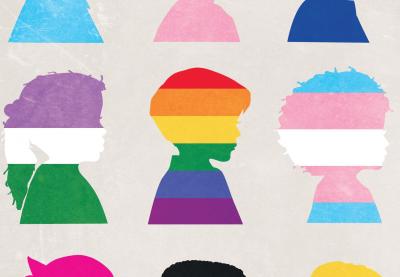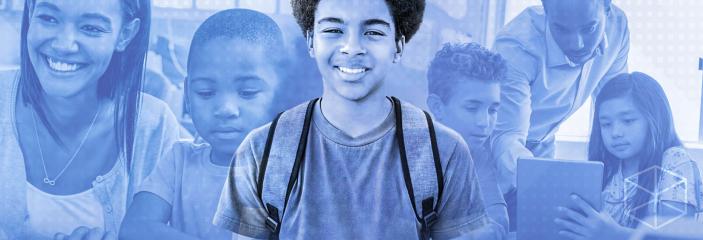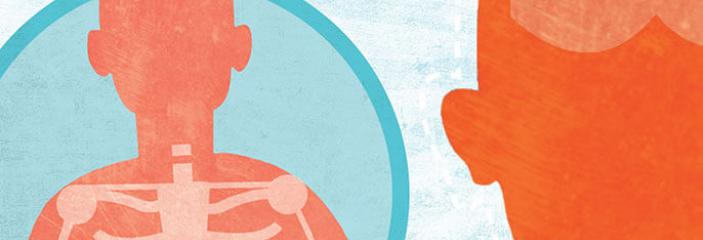If you’re an educator, chances are you have struggled to support students who question their sexual identity or don’t fit neatly into social expectations of what it means to be a boy or a girl. Perhaps you can relate to situations like these:
One of my students wants to be referred to as a boy. The student’s mother is adamant: “My daughter is a girl!”
My 7-year-old is tired of students constantly questioning why he plays with dolls. I am supportive of him, but I don’t know what to do.
Two colleagues in the teachers’ room discussed a boy who is sensitive and not into sports. One of them said, “He’s going to be gay for sure.”
At the heart of these scenarios lies confusion about the nature of gender, sex and sexual orientation. When adults don’t understand the complexity of these concepts, young people must navigate these and other challenging situations by themselves.
In a recent blog post titled, “I’m An 18-Year-Old Boy Who Wears Blue Nail Polish—Get Over It,” blogger Nasir Fleming wrote: “Enforced gender roles do not only affect those who break them, but also those who give their blood, sweat and health just to fit in with them.”
Fleming’s choice of words is not an exaggeration. Imagine being a transgender student who dehydrates himself to avoid using the girls’ bathroom all day, or a student who is ready to drop out of school because she is bombarded with verbal or physical abuse about her perceived sexual orientation. Imagine being one of the nameless students represented in studies that document the disproportionate risks for assault, rejection and self-harm in schools that are not accepting of fluid gender identity, gender expression or sexual orientation.
A Binary System
A significant barrier to creating fully inclusive schools is the presumption that sex, gender and sexual orientation fit neatly into a binary model.
This binary world is populated by boys and girls who are viewed as polar opposites. This world conflates biology, gender expression, gender identity and sexual orientation, relegating people to rigid categories: male or female, gay or straight.
Schools have a history of reinforcing binary perceptions of sex and gender. Even before children enter most schools for the first time, parents or guardians are asked to check male or female boxes on registration forms. On the first day of school, teachers might shepherd students to class in boy and girl lines. Restrooms are designated for boys and girls. Everywhere there are expectations about what kind of imaginative play and dress-up is appropriate for whom, about who is naturally rambunctious and who is predestined to quiet studying. As students get older, they are subjected to gendered expectations about extracurricular activities, dating and dress—even what colleges and careers they’re encouraged to pursue after graduation.
If we truly want to include all students, we need to look beyond binaries to create practices that include school communities’ diverse representation of biological sex, gender identity, gender expression and sexual orientation.
Biological Sex
Sex refers to a person’s anatomy, physical attributes such as external sex organs, sex chromosomes and internal reproductive structures.
For most people, the anatomical indicators of sex line up in a way that is typically understood as male or female. However, intersex conditions also occur naturally in all species, including humans. Intersex refers to a variety of conditions in which an individual is born with reproductive or sexual anatomy that doesn’t fit the typical understanding of female or male bodies.
In the past three decades, more than 25 genes have been identified that were once believed to be associated solely with male or female biology, but in fact exhibit more complex, nonbinary variations. With the advent of new scientific knowledge, it is increasingly evident that biological sex does not fit a binary model. Intersex conditions are increasingly being recognized as naturally occurring variations of human physiology.
Following years of organizing by intersex activists, momentum is growing to end what was once a standard practice of “gender-normalizing surgery” performed on intersex infants with ambiguous genitalia. In 2013, the United Nations condemned the use of this unnecessary surgery on infants, putting it in the same category as involuntary sterilization, unethical experimentation or reparative therapy when enforced or administered without the free and informed consent of the person receiving the surgery.
Gender Identity
Gender identity is an individual’s deeply held sense of being male, female or another gender. This is separate from biological sex.
Some children become aware at a very young age that their gender identity does not align with their physical sex characteristics, even expressing the disconnect as soon as they can talk. Other transgender and gender-expansive people recognize their gender identity during adolescence or adulthood.
Individuals whose biological sex and gender identity “match” rarely think about the alignment of biology and identity because they have the privilege of being considered normal by society. People whose gender identity and biological sex align are called cisgender. Cisgender is an important word because it names the dominant experience rather than simply seeing it as the default.
Individuals living comfortably outside of typical male/female expectations and identities are found in every region of the globe. The calabai and calalai of Indonesia, the two-spirit Native Americans found in some First Nation cultures, and the hijra of India all represent more complex understandings of gender than a binary gender model allows. At least seven countries—including Australia, Bangladesh, Germany, India, Nepal, New Zealand and Pakistan—recognize a third gender for legal documents. As people around the world use a growing variety of terms to communicate their gender identities, Facebook now offers its users 52 options with which to define their gender.
Won’t Students Get Confused?
Studies show that children of any age are able to understand that there are more than two gender categories when the concept is explained to them in a simple, age-appropriate manner. The same is true of diversity related to biological sex and sexual orientation.
Wondering how YOU might answer questions that parents and colleagues might have? See Gender Spectrum’s responses to Common Questions and Concerns from Parents and Guardians.
Gender Expression
Gender expression can be defined as the way we show our gender to the world around us. Societal expectations of gender expression are reinforced in almost every area of life. Even very young children are clear about the gendered choices that boys and girls are “supposed to” make in relation to toys, colors, clothes, games and activities.
Girls whose gender expression is seen as somewhat masculine are often considered tomboys. Depending on the context and the degree to which they transgress norms, tomboys might be seen positively, neutrally or negatively. For example, a girl who identifies as a gamer geek, cuts her hair short and wears clothing perceived as masculine may be labeled as a “cute tomboy” or met with words intended to hurt, such as dyke or freak.
Positive or neutral labels are harder to come by for boys whose sex and gender expression are seen as incongruent. Common words used to describe such boys tend to be delivered with negative—sometimes hateful—intentions, words like sissy and faggot. There also is little room for boys to expand their gender expression. Just wearing a scarf or walking in a stereotypically feminine way can lead to abuse from peers, educators or family members.
Bias related to race, economic status, religion and other identities also influences responses to young people who break out of gender constraints. School-discipline data provide a disturbing example of this, as seen in the report Black Girls Matter: Pushed Out, Overpoliced and Underprotected. The report reveals that African-American girls who act in ways considered stereotypically masculine are far more likely to be disciplined by their teachers than white girls who exhibit similar behaviors.
Sexual Orientation
Sexual orientation is about our physical, emotional and/or romantic attractions to others. Like gender identity, sexual orientation is internally held knowledge. In multiple studies, LGBT youth reported being aware of their sexual orientation during elementary school, but waited to disclose their orientation to others until middle or high school.
Students might identify as bisexual, pansexual, queer, asexual or use a host of other words that reflect their capacity to be attracted to more than one sex or gender or not to feel sexual attraction at all. This emerging language illuminates a complex world in which simple either/or designations such as gay or straight are insufficient.
The overlap and conflation of gender identity and sexual orientation can be confusing for individuals trying to make sense of their own identities as well as for those who are clear about their identities. It can also be complicated for anyone seeking to support them. In her book Gender Born, Gender Made, psychologist Diane Ehrensaft describes a teenage client who, over the course of a few weeks, identified in seemingly contradicting ways, including as androgynous, as a gay boy and—eventually—as a heterosexual transgender female. This young person was involved in a dynamic process that illustrated both the way sexual orientation and gender identity are intertwined and how they are separate.
Embracing a Spectrum Model
As we have seen, binary notions of gender, biology and sexual orientation exclude large swaths of human diversity. This diversity can be better understood by using spectrum-based models. Spectra make room for anyone whose experiences do not narrowly fit into binary choices such as man/woman, feminine/masculine or straight/gay.
Gender-expansive and genderqueer are two of many terms used by people to describe themselves as somewhere on a gender spectrum—outside of the either/or choices relating to sex and gender.
A spectrum model not only makes room for people who are gender-expansive but for those who are perceived to be more typical as well. A spectrum provides an avenue to a deeper understanding of the separate yet interrelated concepts of biological sex, gender identity, gender expression and sexual orientation. For educators, this understanding is a critical first step toward changing school-based practices and toward being advocates for all students—regardless of where they fit on any spectrum.




0 COMMENTS